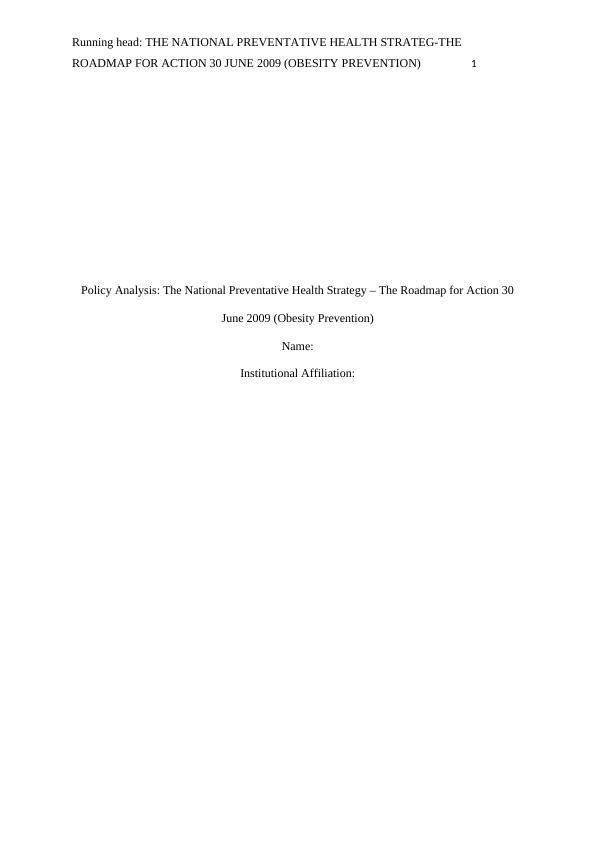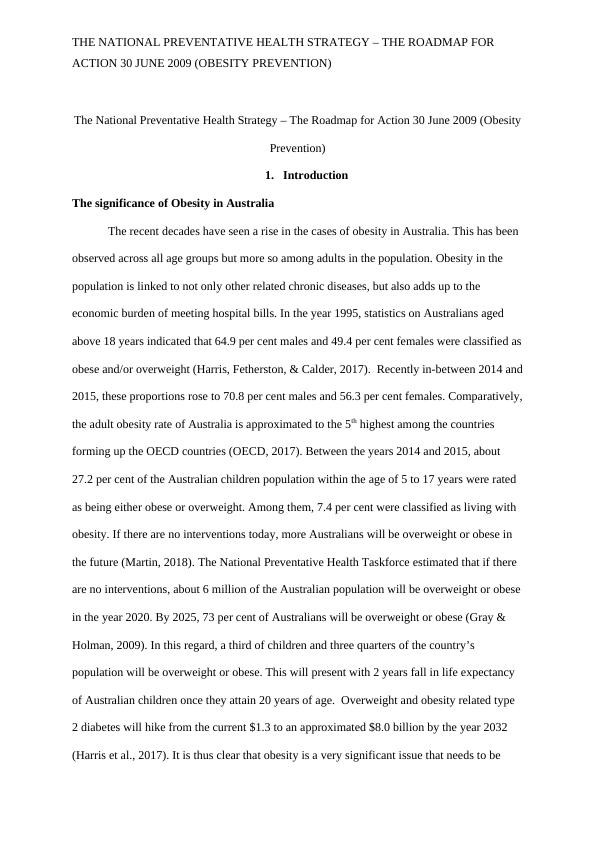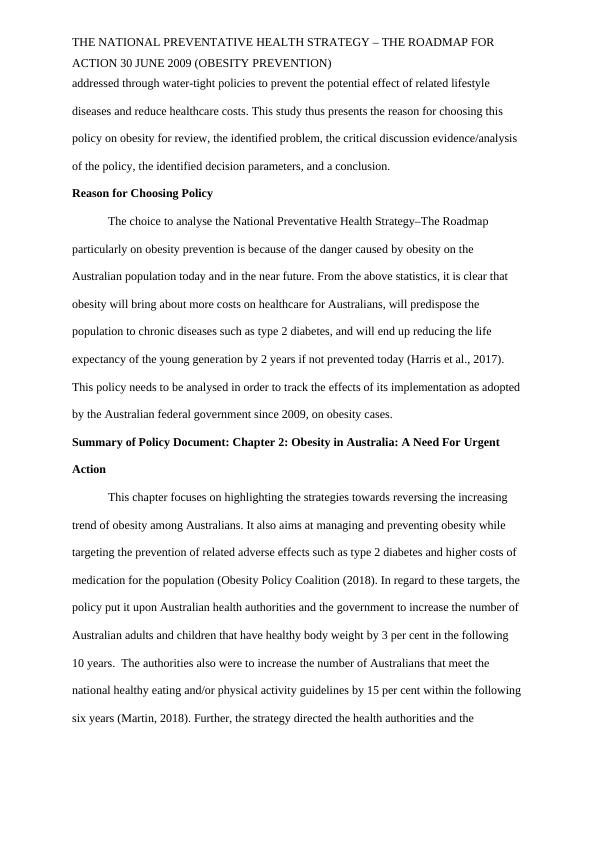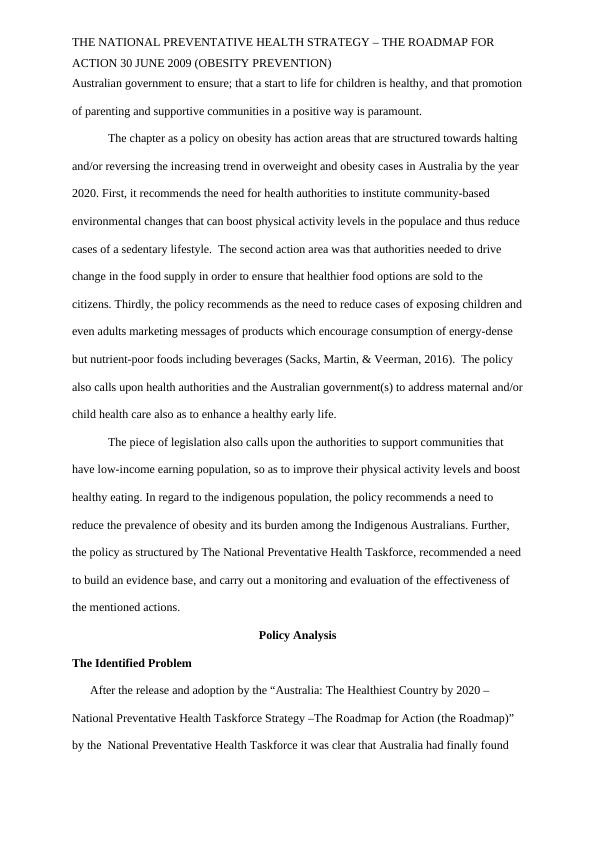Policy Analysis: The National Preventative Health Strategy – The Roadmap for Action 30 June 2009 (Obesity Prevention)
This assignment requires a policy analysis on a chosen policy problem, including an introduction outlining the significance of the problem and a policy analysis section demonstrating understanding of the issues.
15 Pages4353 Words248 Views
Added on 2023-06-13
About This Document
This study presents the reason for choosing this policy on obesity for review, the identified problem, the critical discussion evidence/analysis of the policy, the identified decision parameters, and a conclusion.
Policy Analysis: The National Preventative Health Strategy – The Roadmap for Action 30 June 2009 (Obesity Prevention)
This assignment requires a policy analysis on a chosen policy problem, including an introduction outlining the significance of the problem and a policy analysis section demonstrating understanding of the issues.
Added on 2023-06-13
ShareRelated Documents
End of preview
Want to access all the pages? Upload your documents or become a member.
Obesity in Australia: A Need for Urgent Action
|14
|3972
|176
Public Health Promotion Project 2022
|10
|2916
|23
The Australian’s Health Policy PDF
|4
|889
|69
Health Promotion: A Critical Analysis of the National Preventative Health Taskforce Report
|10
|2910
|96
Prevention and Management of Overweight and Obesity in Australia Policy
|16
|4351
|1
Prevention of Overweight and Obesity:
|8
|1578
|16




